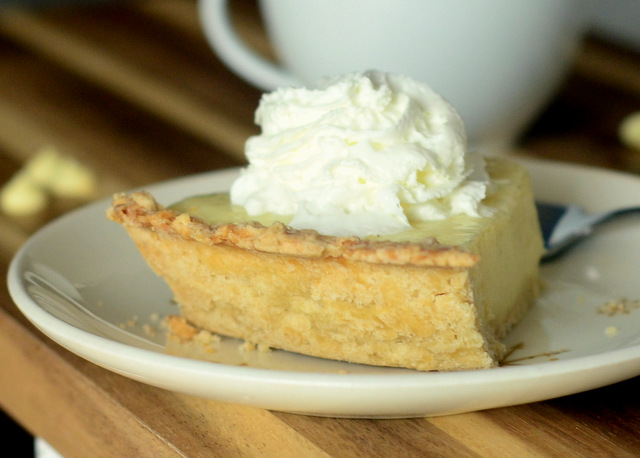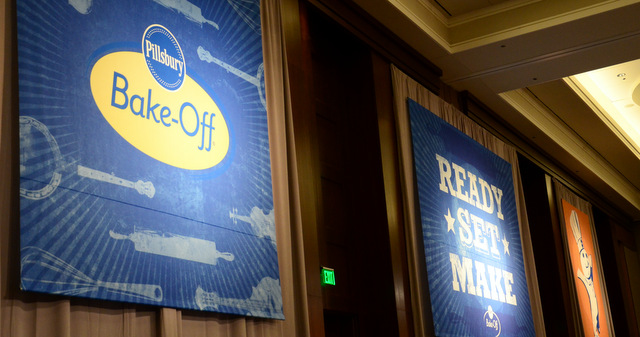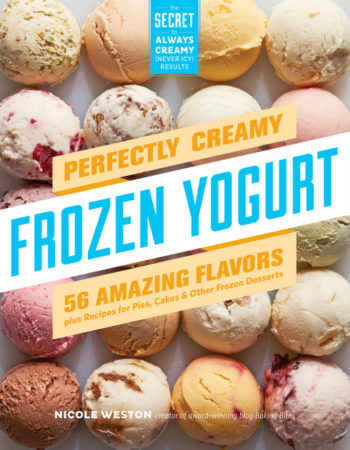
Pie crusts are some of the most challenging things for bakers to master. Or, perhaps, they’re some of the most intimidating. A good pie crust should be crisp and tender, with a flaky crumb that withstands the moisture from pie fillings (at least for the first day or so). While it can be done very quickly once you have experience, the process of cutting the butter, chilling the dough, rolling out out, etc. can be very intimidating at first. Fortunately, this No-Roll Brown Butter Pie Crust requires none of those steps. This ultra-easy pie dough is stirred together and pressed into a pie plate with virtually no preparation required.
The dough starts with butter, which is browned on the stovetop and used while it is still melted. Butter and water are combined and poured into a the same mixture of flour, sugar and salt that is used in most pie crusts. The mixture is stirred together until it forms a moist streusel, then poured into a pie plate and pressed into place. The finished crust won’t look quite as sleek as a traditional crust because of the patchwork nature of how it is put together, but it will form a solid pastry that makes a great base for any pie. And thanks to the nutty flavor of the brown butter, this crust is absolutely fantastic on its own, too.
The crust takes 6 minutes or so, start to finish. Your oven probably won’t even be preheated in that time. I love it because it enables me to make pie on a moment’s notice, without getting out the food processor or waiting for dough to rest. Â Since I’ve made this many times, here are some answers to a few questions that I know might come up:
- Do I have to use browned butter? Nope, you can use regular melted butter (I recommend unsalted for baking in general, but feel free to use salted and omit the salt). You’ll get more flavor if you brown the butter, which can even be done in the microwave.
- Can I roll the crust if I want to? Absolutely. This crust can be gathered into a disc and chilled so that you can easily roll it out. You will want to do this if you prefer your pie with a fluted edge, which is a little difficult to do with a press-in crust.
- Can I use the crust unbaked? Prebaked? The crust can be used in the same way as any other pie crust. Consult your recipe to see what your pie requires.
- Can I add other flavors? This crust doesn’t need anything to be delicious, but you can stir in vanilla extract or spices to give it even more flavor.
- Do I need to use pie weights? This crust won’t try to retract in the pan as some rolled crusts will do (usually because they have not rested enough before going into the oven), so you don’t need pie weights when blind baking it.
More questions? Leave them in the comments and happy pie baking!
No-Roll Brown Butter Pie Crust
1 1/2 cups all purpose flour
1 tbsp sugar
1/4 tsp salt
1/3 cup butter
4 tbsp water
In a small saucepan, melt the butter and cook over medium heat until it begins to bubble, brown and take on a nutty smell, about 3-4 minutes. Remove from heat and set aside to cool slightly.
In a large bowl, whisk together flour, sugar and salt. Make a well in the center of the dry ingredients and pour in butter and water. Use a spatula to stir all the ingredients together. The mixture should resemble a moist streusel topping, with lots of clumps of dough. If dough appears extremely dry and there is a lot of flour that has not been incorporated, add a little extra water.
Pour dough into a 9-inch pie plate and press into an even layer over the base and up the sides. Crimp top edges of the crust with a fork, if desired.
Dough can be prebaked and cooled (350F until golden brown, about 30 minutes) before filling it with a no-bake filling, or it can be filled before baking and baked alongside the rest of the pie. Follow the recipe you’re using for specific crust instructions.
Makes crust for 1 9-inch pie.






Katie
November 17, 2016This recipe seems very similar to your Browned Butter Tart Dough (which is one of my favorites). Aside from quantity, are there any other major differences to be aware of? Do you think this is a better recipe than doubling the tart dough recipe (since that one is too small for a full pie)? Thanks!
Nicole
November 17, 2016It is similar because I’m a sucker for browned butter. 🙂 This dough is a little bit leaner than the tart dough because it uses less fat to flour. What that means in terms of the crust is that it will be a little bit crisper and a little bit lighter, having a pastry-like texture that is similar to traditional pie dough rather than a more shortbread-like dough. You could absolutely use the tart dough for a pumpkin pie or something where you might use a graham cracker crust, but I would use this one for fruit pies. I hope that helps!
Keninseb
December 8, 2016Question! when you say water do you mean cold water, room temperature wate,r warm water, etc, thank you.
Nicole
December 10, 2016Hi Keninseb – It doesn’t matter what kind of water you use in this recipe because of the technique used to make the crust. Cold water is often used in pie crusts because cold butter is also used and the water helps maintain the temperature of the butter. Since the butter is melted already in this recipe, any temperature of water is fine. I typically use room temperature water, which is the most convenient.
–Nicole